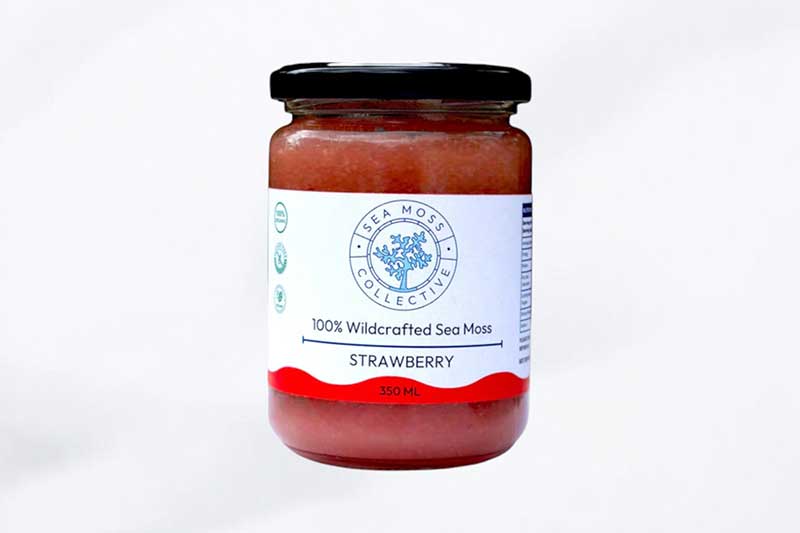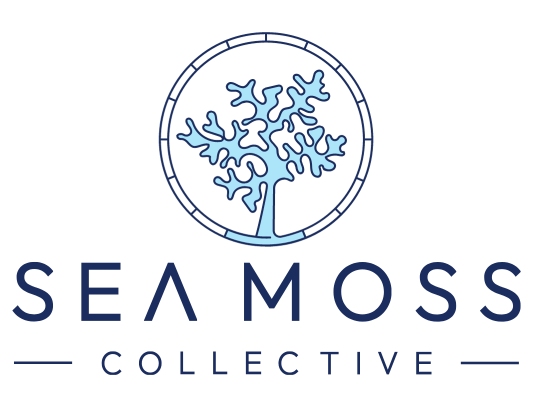A Brief Discussion About Different Types Of Sea Moss
Sea Moss has become quite popular lately. People talk about it in health stores and online forums. But what exactly is sea moss? It's a type of seaweed that grows in ocean waters. There are various types available, each with its unique features. Let's explore the main varieties you might come across.
1. Irish Sea Moss (Chondrus Crispus)
2. Jamaican Sea Moss (Gracilaria)
3. Purple Sea Moss
4. Gold Sea Moss
5. Green Sea Moss
6. Pool-Grown vs Wild-Harvested
1. Irish Sea Moss (Chondrus Crispus):
It is probably the most well-known type. Irish sea moss grows along the rocky coasts of Ireland and other parts of the Atlantic. It has a purple-red color when fresh. After drying, it turns into a golden or white shade.
People often call this the "true" sea moss. Like other seaweeds, it reflects the mineral composition of its growing environment. The texture feels quite thick when prepared as a gel. Some people like adding it to smoothies or recipes for its texture. Irish sea moss has been used for generations in coastal communities, particularly during times of scarcity when food was scarce.
2. Jamaican Sea Moss (Gracilaria):
Jamaican sea moss grows in warmer Caribbean waters. It looks different from Irish sea moss. The color ranges from purple to gold, and it has a slightly different texture. This variety grows faster than Irish sea moss because of the warm tropical climate.
The preparation method stays the same, but some people notice a milder taste compared to Irish Sea Moss. Jamaican sea moss is often more affordable because it's easier to cultivate. Many suppliers sell this type because it's readily available year-round.
Purple sea moss gets its name from its deep purple color. This variety contains natural pigments called anthocyanins. These are the same compounds that give blueberries and grapes their color. The purple variety often grows in deeper waters where sunlight is less intense.
When you prepare purple sea moss, it might turn the gel slightly purple or pink. Some people are drawn to this type because of its rich color, which is due to naturally occurring pigments like anthocyanins. However, the color can fade over time, especially when exposed to light and air.
Gold sea moss has a light golden or yellow appearance. This color usually develops when the seaweed grows in shallower waters with more sunlight. Sun exposure affects pigmentation, creating a golden hue.
Gold sea moss is often considered premium quality by many sellers. It tends to have a milder taste than darker varieties. When you make gel from gold sea moss, it usually turns out clear or slightly yellow. It makes it popular for people who don't want to change the color of their foods or drinks.
Green Sea Moss is less common than other types. It gets its color from chlorophyll, just like land plants. This variety usually grows in areas with specific water conditions and mineral content.
The green color can vary from light to dark green. Some people mix green sea moss with other varieties to get different flavors and colors. The preparation method remains the same, but the final gel might have a greenish tint.
6. Pool-Grown vs Wild-Harvested:
It isn't exactly a different type, but it's worth knowing the difference. Wild-harvested sea moss grows naturally in the ocean. Pool-grown or farm-raised sea moss grows in controlled saltwater pools.
Wild-harvested varieties often cost more because they're harder to collect. They grow slowly and face natural ocean conditions. Pool-grown sea moss grows faster and is more consistent in quality. Both types can be good options, but they might have different mineral profiles due to their growing conditions.
Sea Moss comes in various types, like Irish, Jamaican, purple, gold, and green. Buy from trusted sources and ensure it’s cleaned and prepared according to safe handling practices if you plan to use it in your food or drinks. Please consult a healthcare professional before adding sea moss to your daily routine. If you're looking to explore sea moss, Sea Moss Collective offers responsibly sourced sea moss products in New Zealand. Contact us for details.

